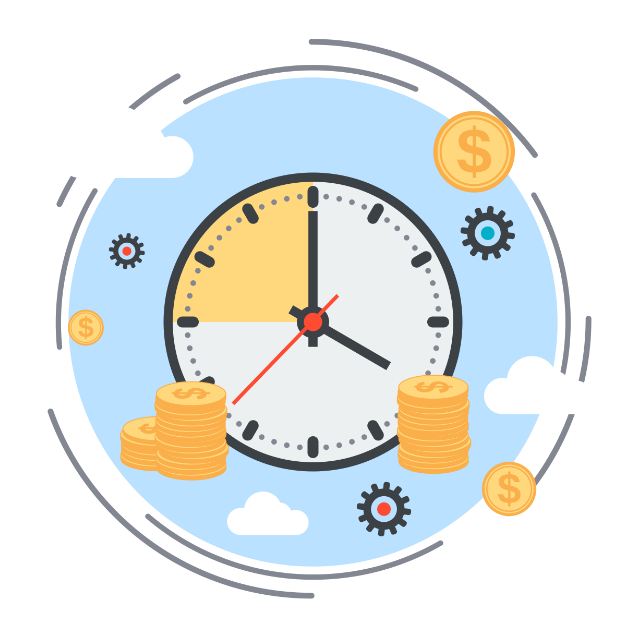UX proposals are a plan for a change in the UX design of an application, product, service or a website – it presents a problem and proposes a solution. This proposal is a sort of a reference to everyone involved in the project. Everybody has to have the same understanding of the project, how the process will go, what it will change and which problems it will resolve.
User Experience design is a big business at the moment and more and more designers are involved with it. According to Forbes, returns on this investment are 9900% or $100 for each dollar invested.
For numbers like that to make sense UX and UI designers have to create great user experiences and that is where UX proposals come in.
This map to successful user experience is certainly not easy to make and it requires a lot of time and
attention to details. But if the designer wants to impress stakeholders, this is the best tool in his
arsenal.
Here are some tips on creating good UX proposals.
1. When To Create a UX proposal

What most people will not tell you is when to write this proposal. This is not so much time-related as it is timing-related.
Writing a UX proposal is an extremely complicated process. It's certainly not the one to start without a certainty of approval.
You shouldn't start writing a proposal until you have been given a go-ahead from your stakeholders.
This would only create more work for you in case the stakeholder refuses to accept your offer for user experience improvement. Wait to get the response and only then start crafting a well-researched UX proposal.
Keep In Mind: When trying to get an approval before you create a UX report, it's always a good idea to present the benefits of your change and not its characteristics. Clients don't really care or understand how it works and all the little details related to it, they just want to know how the change will benefit them and their business. So, it might be a good idea to keep the benefits in the spotlight of your proposal while leaving the features out and putting them in the proposal. This approach will help you get approved much faster.
2. State The Problem

Once you've been approved, you can start creating the UX proposal. This and any other process first begins with defining what the problem of the situation is. What this means is that you will clearly state your problem and try to figure out – if you haven't already – the causes of the problem.
To be able to see the problem, you first need to know what the goals of the company are, what they want and need for both the future and the moment and, of course, the intended use of the product.
Before you start defining the problem, you should do some research – interview those affected by the problem, observe how they interact with it, how they overcome it, and, if possible, do some experiments to figure out the best way to deal with this issue.
Once you've done this, you'll have a better understanding of what is going on and what is needed, so you can start writing your problem down.
Keep In Mind: While writing a UX proposal, use simple language and don't overdo it with jargon terms that might confuse people. Stakeholders are not always skilled in the same branch as you are, so you should always try to simplify things so that anyone can understand.
Of course, if the jargon is necessary then it's fine. This will not only bring the topic closer to everyone, but it will make you seem less pretentious. There are tools like OXEssays and BigAssignments available for business communication improvement that can certainly help out.
3. Give Some Background Information

Clients like to see where your ideas are coming from. The background information portion of the UX proposal should give you just enough space for that. This is where you would explain what led to your plan of changing the user experience on their application, website or product. You should also share your previous experience with a similar situation, history of the project, etc.
Keep In Mind: One of the main points of writing a good quality proposal is the grammar and spelling bit of it. If the client notices too many mistakes in this area, they will probably think less of your proposal and your project.
These mistakes seem so unprofessional and bad that even the best proposal doesn't stand a chance if it's filled with errors. To avoid this, edit it thoroughly – on your own or using a tool. If you tend to skim over details, it's best that you employ an online service like Essay Writer and PaperFellows.
4. Structure Your Document Properly

Bad formatting and organizing can often harm the project's likeability. A structure of a UX proposal is
highly debated but there is a general acceptance of the following model of the structure.
1. Project
Overview
2. Project Approach
3. Timeline
4. Cost
5. Assumptions
6. Appendix and closure
Keep In Mind: You can change the structure of this document to suit your needs. List all of the things that you need to say to the stakeholders that are relevant to the project and make those things categories in your document. As long as the proposal is structured and therefore easy to read and understand, your structure will work fine.
5. State Goals And Outcomes

Describe what the goal of your proposal is – it should be clear and simple. Also, describe all of the possible outcomes of your plan to make it clear to your clients what could happen.
Simple goals will help you as well – the plan may be complicated but what you get once you are done should be clear and easy for everyone to understand. Set measurable and relevant goals that inspire you to work and create.
Keep In Mind: This should be brief – the shorter the better. A few sentences briefly describing your goal and possible outcomes are all you need.
“Brevity in writing down the goal and outcomes is of high importance. It shouldn't be too complicated so that the client can get confused and annoyed at the length of the text. Make it so that it's easy to understand and easy to read,” says Jenny Moss, a developer at Academized.
6. Describing Deliverables

Deliverables are mostly dependent on what the project at hand is. It describes in great detail how you intend to realize this proposal. What your deliverables might always involve, though are:
- Competitor analysis
- User testing
- Stakeholder interviews
- Sitemaps
- Prototypes
- Wireframes
- Market research and analysis
- Persona development
If you have a larger project, you should divide these into stages and separate categories. This will by far be the longest section of your proposal.
“When it comes to deliverables, they will mostly vary from project to project. But you should always try to offer your best solutions and findings. Most of the projects will involve research, design and then test followed by validation of what you created,” says Mike Cummings, a UX manager at UK Essay Writing Service.
Keep In Mind: This section of your proposal should be as clear and specific as possible. Vague statements will not do as they might hold many different meanings depending on what the project at hand is. Use KPIs and metrics to create additional clarity to the project.
7. Create Assumptions
Assumptions are exactly what the name says they are – you create predictions on what will happen and how it will happen. These often don't have a proof so that's why they are called assumptions. It might sound like it is not that important but these will help you bring the project off the ground and it gives you a changeable structure that you can follow.
Studies even recommend challenging your assumptions in order to entice innovation and idea creation.
Keep In Mind: Your assumptions are easy to change so don't be afraid to get creative. State clearly what you think will happen and how long it will take.
8. Budget And Time

Give your project all the necessary time. In case that there are certain parts of the projects that depend on other stakeholders, don't forget to mention that as, for example, suppliers, can be late sometimes and many other things can happen that can slow you down.
When it comes to the budget, you should definitely use a tool or ask around to find out how much money other developers and designers usually get for your type of project.
Keep In Mind: You should always give yourself more time. If you state that you don't need much time it will lead to tight deadlines that will only cause you stress. Be realistic about both the budget and the time. You can easily return the money or finish sooner than stated but you'll create a lot of frustration for your clients if you miss the deadline or ask for more money.
Conclusion
Creating a UX proposal is not an easy feat at all. But, with the right tools and knowledge, you can easily craft a proposal that will impress any stakeholder. Make sure that you do a thorough research and that you understand the project and the problem at hand completely. This way you'll be set up for success and you will create the best value for your clients.



